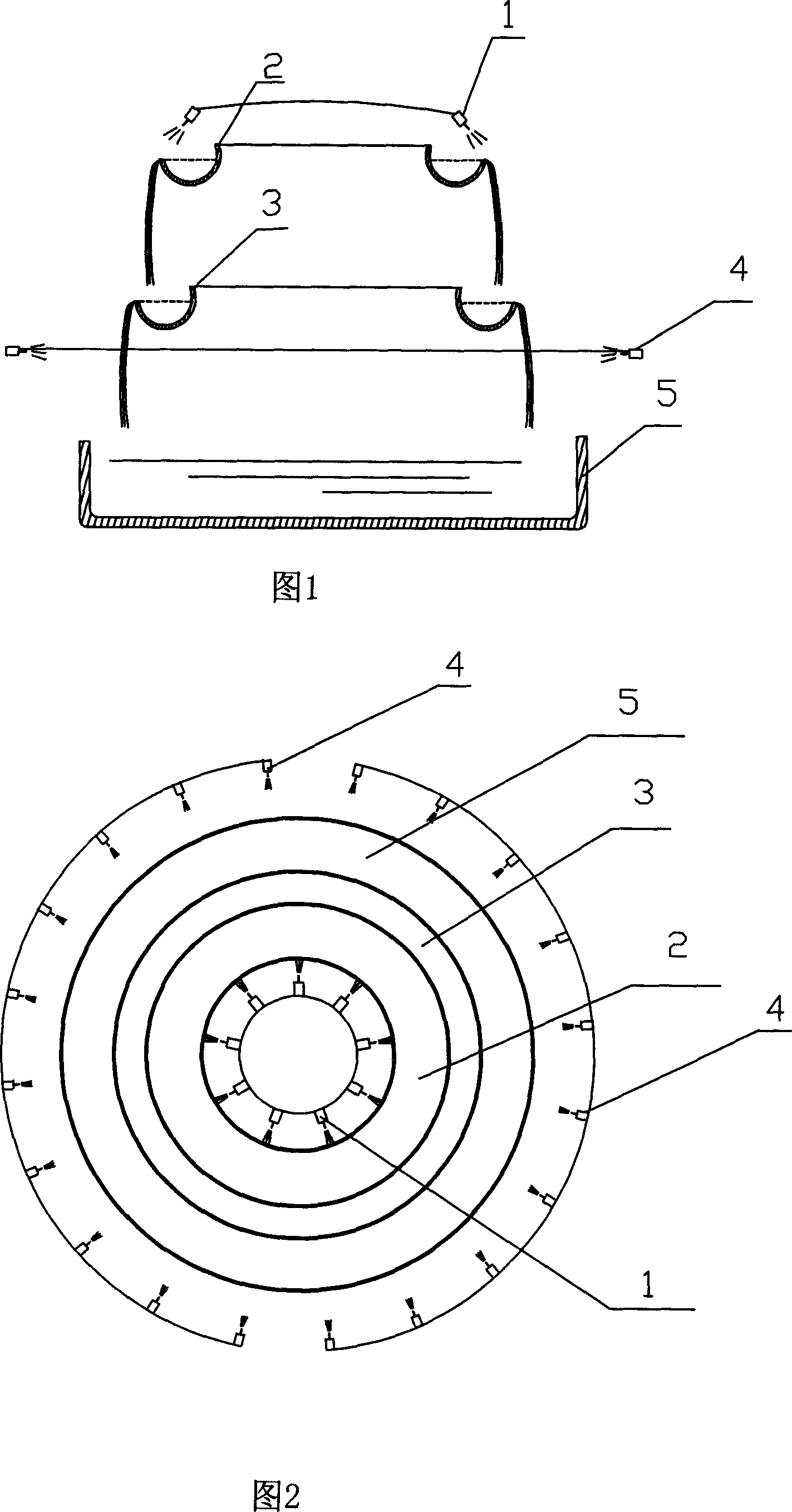P-type solar cell grade polycrystalline silicon preparing process
A technology for preparing solar cells and polysilicon, which is applied in the metallurgical field, can solve the problems of difficulty in removing boron and take time to popularize, and achieves the effects of reducing industrial cost indicators, saving materials, and simplifying process flow.
- Summary
- Abstract
- Description
- Claims
- Application Information
AI Technical Summary
Problems solved by technology
Method used
Image
Examples
Embodiment 1
[0025] Embodiment 1. The manufacturing process of solar cell-grade polysilicon includes the following steps in sequence:
[0026](1) Silica selection: Since silicon-based solar cell materials are extremely sensitive to III-V elements, and metal elements are also very harmful to the improvement of solar cell conversion efficiency, so choose a single metal element content of less than 100ppmWt (weight content, lower Same), the total metal content is less than 3000ppmWt, the group III non-metal element content is less than 0.1ppmWt and the group V non-metal element content is less than 100ppmWt silica as raw material. (2) Submerged arc furnace reduction: select petroleum coke as reducing agent with single metal element content less than 100ppmWt, total metal content less than 3000ppmWt, group III nonmetal element content less than 0.1ppmWt and group V nonmetal element content less than 100ppmWt . The ratio of silica to petroleum coke is converted according to its purity and then char...
Embodiment 2
[0027] Embodiment 2. In this embodiment, in step (2), coal accounts for 15% of the weight of the reducing agent, the poplar stick ramming alternate time is 10 minutes, the silicon water discharge time interval is 4 hours, and the cooling water in the ingot casting process The temperature is controlled at 30°C, and the thickness of the silicon ingot is controlled at 30 cm; in step (3), the temperature rise step is 15°C, and the temperature is raised to one step for 1 minute; in step (5), the frequency is controlled at 150 Hz, and the vibration time is 20 minutes. The temperature of the silicon water is kept at 1700℃, and the high temperature is left for 15 minutes after the vibration is completed; in step (7), the silicon water is kept at 1600℃ for 100 minutes, and the power of the lowermost heating element is gradually reduced to zero power in 5 hours. , The entire ingot casting process takes 30 hours. Others are the same as in Example 1.
Embodiment 3
[0028] Example 3. In this example, in step (2), coal accounts for 30% of the weight of the reducing agent, the alternating time of poplar stick stoking is 15 minutes, the time interval of silicon water is 6 hours, and the cooling water in the ingot casting process The temperature is controlled at 60°C, and the thickness of the silicon ingot is controlled at 40 cm; in step (3), the temperature rise step is 20°C, and the temperature is increased to a step for 8 minutes; in step (5), the frequency is controlled at 250 Hz, and the vibration time is 10 minutes. The temperature of the silicon water is kept at 1800℃, and the high temperature is left for 20 minutes after the vibration is completed; in step (7), the silicon water is kept at 1800℃ for 30 minutes, and the power of the lowermost heating element is gradually reduced to zero power in 12 hours. , The entire ingot casting process takes 72 hours. Others are the same as in Example 1.
PUM
| Property | Measurement | Unit |
|---|---|---|
| thickness | aaaaa | aaaaa |
Abstract
Description
Claims
Application Information
 Login to View More
Login to View More - R&D
- Intellectual Property
- Life Sciences
- Materials
- Tech Scout
- Unparalleled Data Quality
- Higher Quality Content
- 60% Fewer Hallucinations
Browse by: Latest US Patents, China's latest patents, Technical Efficacy Thesaurus, Application Domain, Technology Topic, Popular Technical Reports.
© 2025 PatSnap. All rights reserved.Legal|Privacy policy|Modern Slavery Act Transparency Statement|Sitemap|About US| Contact US: help@patsnap.com


